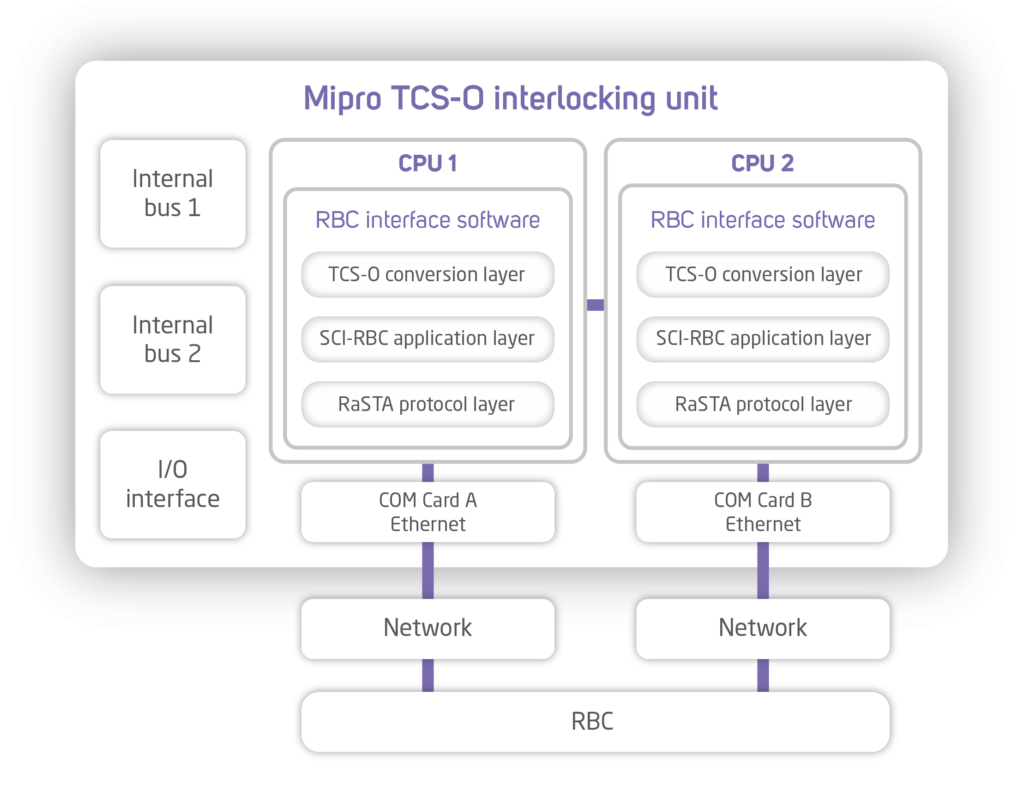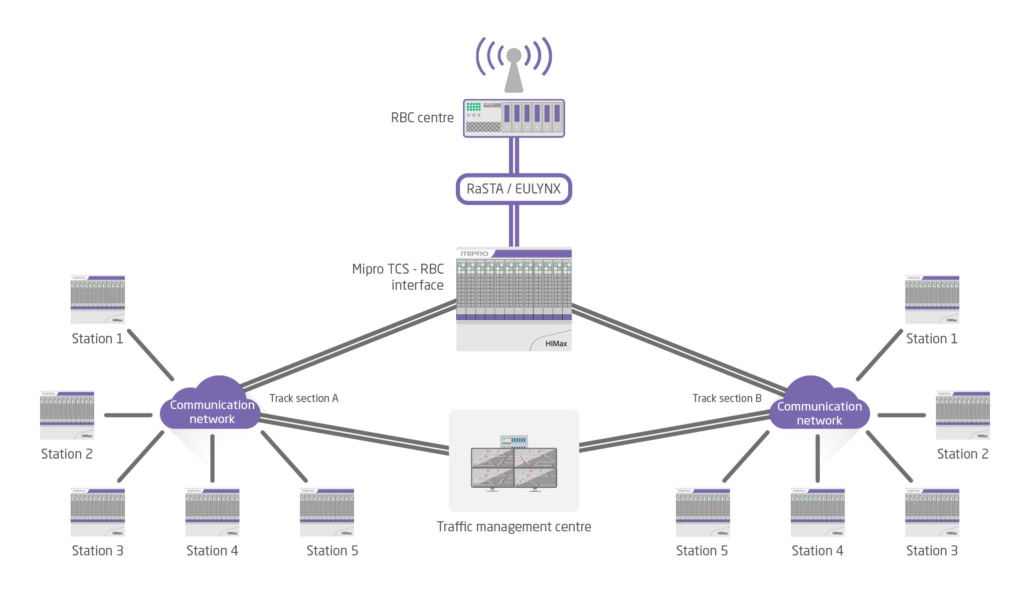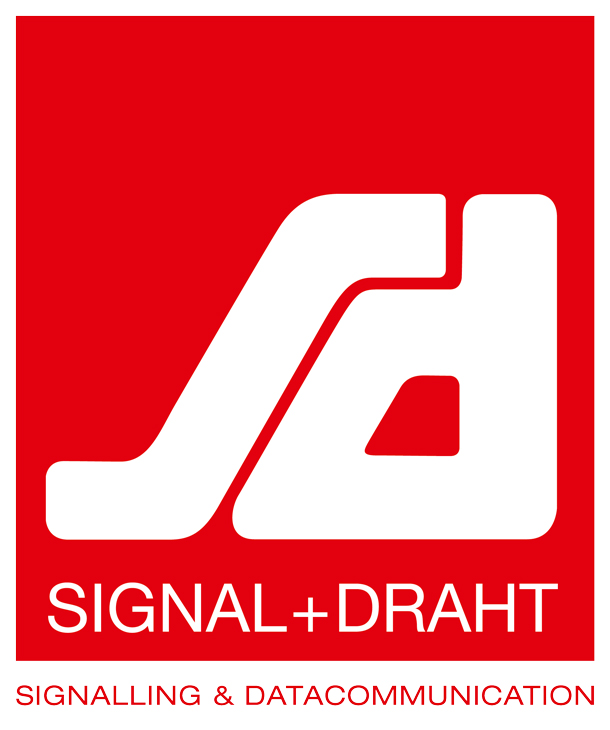National railway signalling systems have graduallygrown over time to include different solutions from several technology providers. There is no common standard
for these systems’ external interfaces and interoperability has therefore always been a challenge. Typically, the integration between different interlockings, trackside elements and traffic management systems has been achieved by means of the tailor-made adaptation of proprietary interfaces. These adaptations are continuously maintained in order to address any lifecycle modifications in the installed base equipment.
Common ground when defining EULYNX
Infrastructure managers have woken up to the fact that, without any clear interface definitions, the signalling industry is developing in a direction where the interoperability between solutions is becoming increasingly difficult and costly. The common wish to standardise signalling system interfaces and elements led 13 infrastructure managers to form a group in 2014. This was the start of the European EULYNX initiative aimed at defining a modular and obsolescence-immune control and automation system for railway infrastructure.
The EULYNX consortium realised that the widespread involvement of the railway industry was crucial for development. After discussions in 2020, UNIFE and EULYNX agreed on a collaboration agreement so that the industry could join and influence the EULYNX work process. The agreed collaboration also enables small suppliers such as Mipro to follow and influence the technical aspects in the definitions through the UNIFE CCS-P (Control Command and Signalling Platform). Mipro is a Finnish transport safety system specialist and a member of UNIFE with over 40 years‘ experience in developing and supplying signalling and traffic management solutions for Nordic and Baltic railway and metro networks. By means of this collaboration, Mipro has shown how modular and flexible COTS (commercials off the shelf)-based CENELEC SIL4 interlocking systems can be equipped with EULYNX interfaces to standardise the modernisation of the railway infrastructure.
The ERJU’s (Europe’s Rail Joint Undertaking) System Pillar consortium joined the development of EULYNX at the end of 2022, whereupon the active role of the CCS-P as part of the EULYNX working group ceased. This change significantly raised the priority level of EULYNX along with other new technologies such as RCA. Suppliers (UNISIG) play a greater role in the development work in the System Pillar and the funding comes from the EU. The aim of this work is to raise the EULYNX specifications to the EU level (TSI).
The current EULYNX specifications have been divided into multiple domains and working groups in the System Pillar. SME companies find it more challenging to become actively involved in the development. However, smaller suppliers can follow and comment on the ongoing work through mirror groups (for example the SA CS (Trackside Asset Control and Supervision) group). Wide cooperation between all the industrial players should be embraced in order to achieve transparency in the development of open standards.
Preparation for ETCS in Finland
The railway network in Finland is approximately 6,000 kilometres long with double-track sections in a few main corridors and the capital area, while the remaining 88 % of the routes consist of a single-track network. The train control is based on a national ATP system with trackside equipment for train detection and communication based on balises and signals. A nationwide Digirail study started in 2019 in order to explore how to modernise and increase capacity in the most nationally effective and costefficient manner, while taking the EU regulations into account. The Digirail study has been completed and the national European Rail Traffic Management System (ERTMS) implementation plan has been updated. The target is for the train control systems to comply with the requirements of the European Train Control System (ETCS) Level 2 (L2) system, which involves continuous supervision of train movements via radio signals. The plan includes also an option for further upgrade from ETCS L2 to ETCS L3.
The modernisation of the whole country’s railway network will take decades to accomplish, which raises concerns about the security and availability of the existing infrastructure during the migration period. Lifecycle management and continuous investments in the safety systems must also not be forgotten. By improving the technical infrastructure and expanding its lifecycle, the total cost of ownership for the current railway networks can also be optimised. Furthermore, equipping the installed base with EULYNX interfaces will enable interoperability between the legacy and ETCS components thereby providing remarkable savings and faster roll-out for the ETCS overlay.
EULYNX is paving the way towards a Finnish ETCS rollout
The Finnish Transport Infrastructure Agency (FTIA) was one of the first countries in Europe to implement EULYNX. The preparation for the future national ETCS-based Digirail project had already started with common interface requirements when implementing new signalling systems. Securing the compatibility between the existing signalling systems and the planned ETCS based solutions has enabled infrastructure managers to optimise investments by expanding the lifecycle of the signalling systems. One of the first EULYNX projects in Finland was announced in 2021 when the SCI-RBC interface was defined as a requirement for a new interlocking system at the Joensuu marshalling yard; this should subsequently interface with the future Radio Block Controller. Mipro was selected to provide the complete signalling system for this marshalling yard improvement project. The Joensuu yard is the biggest junction station in eastern Finland and it consists of three separate yards.

Picture: The Joensuu marshalling yard. Source: Väylävirasto
The new Joensuu interlocking system contains traditional visible signals for train and shunting movements. The train detection throughout the area is realised using an axle counting system. The first implementation of the new RBC interface has already been delivered and is now ready for the future ETCS migration. The train control is currently realised using the legacy ATP system (ATP-VR/RHK). The RBC interface will come into operation once the new ETCS L2 system covers the area (current estimate: 2037).
One year after that, the FTIA launched a call for tenders to modernise the interlocking at the Kuopio marshalling yard in 2022 in order to further meet the EULYNX RBC interface requirements. Mipro was once again selected to modernise the signalling system with the ETCS-ready interlocking. Both the Joensuu and Kuopio modernisation projects are ongoing with final implementations during 2023 and 2024.
ETCS-ready interlocking
Mipro has implemented the SCI-RBC interface to its TCS-O interlocking solution as a generic application. The TCS-O solution is based on a COTS Safety PLC (Programmable Logic Controller) by HIMA (HIMA Paul Hildebrandt GmbH) that provides tools for creating custom interfaces. Mipro’s interlocking solution uses duplicated CPUs and communication channels to ensure high system availability. The implementation of the TCS-O system can be centralised or distributed depending on the customer’s requirements. The RBC interface can also be separated into two locations.
The RBC interface is isolated in separate software modules that enable feasible changes whenever the EULYNX or customer requirements change throughout the lifecycle. The interface consists of three separate parts. The safety communication is covered by the RaSTA layer (protocol). The duplicated Ethernet interface and RaSTA protocol ensure redundancy and high communication channel availability. The RBC application layer contains the EULYNX SCI-RBC data structures. In TCS-O, the conversion layer acts as a channel to different interlocking data, such as information on element statuses and train routes.
Not all the Finnish national ETCS requirements were finalised during the RBC interface development. The functionalities between the RBC and the interlocking will change once the national requirements become more precise.
The RBC interface has been designed and implemented to the SIL4 level according to the railway standards (EN 50126, EN 50128, EN 50129 and EN 50159). The current solution is based on the EULYNX Baseline 3 Release 6 specification version. The RaSTA and SCI-RBC functionalities have been tested against an RBC simulator. The implementation has been approved by the customer’s inspectors and the external CENELEC ISA.

Image: The Mipro TCS RBC interface architecture
Retrofitting the RBC interface
Modern interlocking platforms and increased computing power have opened up the possibility of covering a wide area of the network with a single interlocking system. It is possible to cover a large area of low-density lines with one centralised ETCS L2 RBC interface. In most areas, there is no need to change the track layout and the trackside modifications can be minimised. The ETCS Hybrid L3 solution may resolve capacity problems between the stations in some areas. Hybrid L3 functionalities can be added on top of the SCI-RBC interface. There is currently no need to certify the SCI-RBC interface, which means that national changes are still possible.

Image: An example of a retrofit solution for the Mipro TCS System
Evolution instead of revolution
Railway infrastructure modernisation is like repairing a ship in the middle of the sea. It must be done piece by piece. How the pieces fit together sets the prerequisites for success. Traffic flow and safety have to be secured at all times. Given that the network consists of a wide variety of technologies and interfaces from different vendors and decades, the overall system has already been developed in a stepwise fashion to meet today’s requirements. Applying EULYNX open interfaces to new ETCS functionalities is merely a continuation of the same evolution.
It is seldom possible to modernise a national network all at once; especially if there are thousands of kilometres of track with very modest traffic on most parts of the network. Focusing the modernisation on the busy areas resolves a major part of the additional capacity needs. The capacity on the low-density lines can easily be supplemented in the traditional way of using train detection for shorter fixed blocks. The low-density lines can be included in the ETCS system with the interlocking’s RBC interface and benefit from this lifecycle extension’s cost savings in order to harmonise the national train control.
Standardised interfaces such as EULYNX offer the possibility of also adding new functionalities to older systems. Adding an RBC interface to an older computer-based interlocking opens up the possibility of extending the existing system’s lifecycle. The construction time and disturbances to traffic can be minimised when the changes to the existing infrastructure are reasonable. A complete system renewal is not economically viable in most cases.
Introducing ETCS to track sections that form part of the existing network brings with it the complexity of two train control systems. Rolling stock should be upgraded with both ATP and ETCS on-board equipment, unless the locomotives are only dedicated to either the old or new track sections. Mixed traffic with duplicated trackside and on-board equipment could only be avoided, if the new infrastructure completely replaces the old one.
The cost of introducing new trackside equipment, on-board equipment and radio connection systems is significant. The more this cost can be optimised to address only selected areas, the more likely it is that the project will be successful. An ETCS-ready interlocking with a EULYNX interface enables a cost-optimised adaptation to the ETCS overlay.
The railway is often connected with national safety requirements, because it is capable of quickly moving people and freight from place to place. Conventional signalling with trackside equipment is much less vulnerable to any caused disturbances than radio-based communications and satellite-based positioning. Once a national ATP system has already been installed, it should be kept functional for backup purposes and to secure safe traffic in exceptional circumstances. Environmentally speaking, open interfaces provide an optimal way of reusing resources. Evolving the system with new modules provides gradual improvements in overall performance. Upgrading the existing signalling to ETCS with a EULYNX RBC interface minimises the need for any new equipment and thus saves the environment considerably.
RELATED CONTENT
Article:
Cost-effective evolution to ETCS with EULYNX RBC interface
Read more about:
Metro ratkaisut ja referenssit
Video:
authors

Sami Hyyryläinen
Product Manager

Jari Pylvänen
Business Unit Director, Rail

